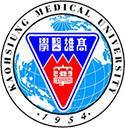Cold weather and large temperature differences between day and night are peak seasons for strokes. In Kaohsiung, a woman in her 70s, Mrs. Pan, woke up one morning to find her left arm and leg immobile, with weakness on her left side and slurred speech. Her family immediately rushed her to the emergency department at Siaogang Hospital. A CT scan confirmed an acute cerebral artery embolism (ischemic stroke), making her eligible for an intracranial mechanical thrombectomy. After discussing with her family, she agreed to undergo neuro-interventional treatment. The hospital’s Stroke Thrombectomy Team promptly performed the thrombectomy procedure. Mrs. Pan safely passed the acute phase of stroke in both the ICU and general ward, and she has since been transferred to a local hospital near her home to continue rehabilitation under the Post-Acute Stroke Integrated Care Program.
Stroke is one of the leading causes of death and disability worldwide. According to the Ministry of Health and Welfare, cerebrovascular disease ranks as the fourth leading cause of death in Taiwan. Strokes can be classified into ischemic or hemorrhagic, with ischemic strokes accounting for about 80%. Traditionally, treatment emphasized timely administration of thrombolytic agents (rt-PA) to dissolve clots or performing intracranial thrombectomy surgery, both within strict time windows. Dr. Lin Tzu-Chao, neurologist at Siaogang Hospital, explained that for patients with severe blockages in large vessels, rt-PA alone offers limited benefit, and mechanical thrombectomy should be considered.
Dr. Lin further noted that intracranial thrombectomy has become a widely adopted acute neuro-interventional treatment. Physicians puncture the femoral artery in the groin and advance a combination of catheters retrogradely to the blocked intracranial artery. Using stent retrievers or aspiration catheters, they remove the clot either by direct suction or stent retrieval. Compared to thrombolytic therapy or conservative medical treatment, patients with large-vessel occlusions benefit from more aggressive treatment and improved outcomes with thrombectomy.
Since November 2023, eligibility for thrombectomy coverage has been extended from within 8 hours to up to 24 hours after stroke onset. The benefits include:
Providing more aggressive treatment for large-vessel occlusion strokes.
Offering an option for patients with more severe conditions or those who arrive at the hospital beyond the thrombolysis time window.
Allowing physicians to directly evaluate vascular conditions during the procedure, uncovering hidden vascular abnormalities such as dissections, aneurysms, or arteriovenous malformations.
With certified specialists and a multidisciplinary medical team, Siaogang Hospital is dedicated to protecting the health of the people in southern Kaohsiung, making emergency and critical care its mission.
